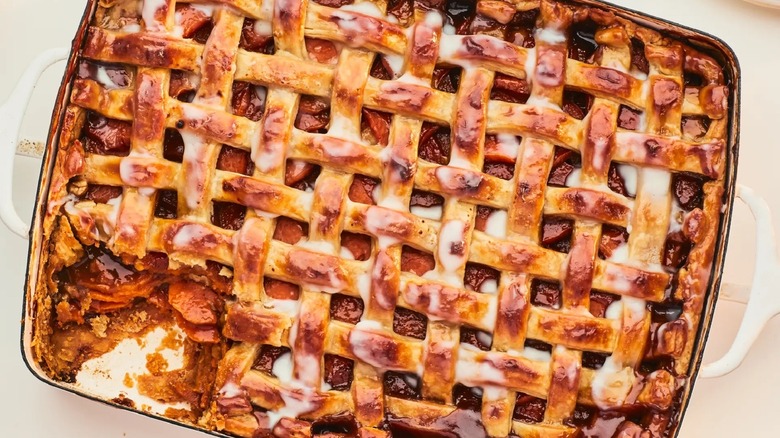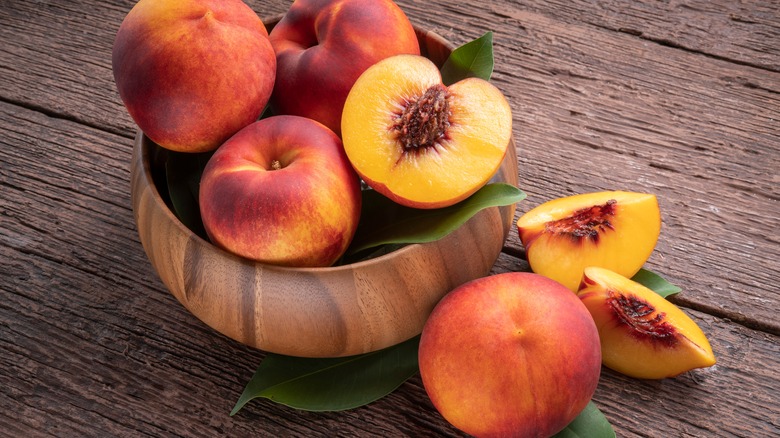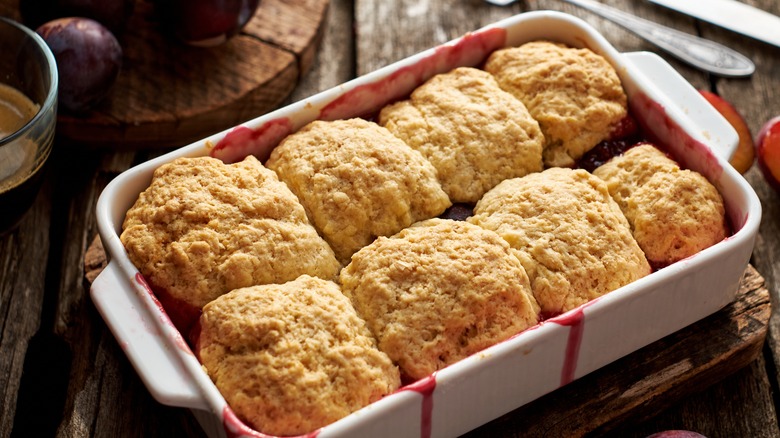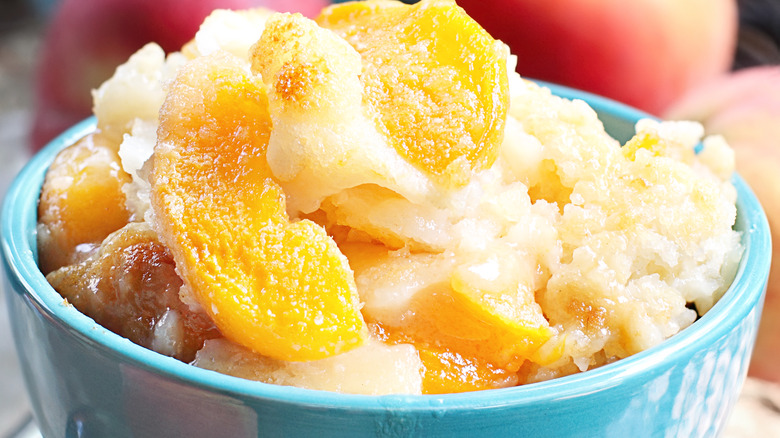What Is North Carolina Sonker And How Does It Differ From Cobbler?
In the summer, we're blessed with juicy fruits like blackberries, cherries, peaches, plums, and raspberries being in season. And along with those delicious fruits comes sweet, melt-in-your-mouth summer desserts. Sure, you can put in the time and effort to make a fruit pie like this lemon blueberry pie or year-round peach pie. But why labor over a double-crusted pie when you can whip up a quicker, just-as-delicious dessert like a Southern blueberry cobbler, peach galette, or an easy strawberry rhubarb crisp?
While you may not have made all these fruity treats, you've likely heard of most of them — but there are a bunch of ways to make summer desserts that go beyond the classics. In fact, if you take a trip down to North Carolina in the summer, you'll likely stumble across something called a sonker. While that word doesn't even exist in the dictionary, you'll be hard-pressed to find a local who's never heard of it in Surry County. This sweet treat, which has been a North Carolina favorite for generations, isn't too different from your typical cobbler. It has all the same components: a thick fruity filling and a buttery, flaky topping. Let's find out what exactly a sonker is and why North Carolinians love this dessert so much.
History of sonker
The sonker, or the Surry sonker as the locals know it, comes from Surry County, North Carolina. Many believe it came to be when immigrants from Scotland planted their roots in Surry County since the word "sonker" may mean "a little of this or that" or "what's for dessert?" to the Scottish (though there are many other theories for the name). It proved to be a hit with farm workers in the South. Unlike finicky pies, a sonker was an easy (and delicious) way to combine fruit and a bready topping that could be carted off to church or the farm. It was also fairly cheap to make and a good way to stretch out fruity ingredients.
The sonker has been a favorite of many generations of Surry County residents — some even claim that First Lady Martha Washington had a recipe for the dessert in her cookbook. Fast forward 200 years to 1980, and the Surry County Historical Society published a collection of sonker recipes with an introduction by prominent Appalachian historian Cratis Williams. Williams said he ate the dessert as a child as far west as eastern Kentucky and theorized that the word sonker originated from the Scottish word for "grassy knoll." Regardless of the true meaning, the dish appears to have Scottish roots that date back as far as the 1700s.
Sonker vs. cobbler
While each recipe may differ a bit, there are a few general guidelines that constitute what makes up a sonker instead of a cobbler. Making a cobbler typically involves combining fruit, lemon juice, and sugar for the filling. The biscuits are usually made with butter, flour, sugar, baking powder, and salt, then dropped in dollops over the top of the fruit mixture and baked until golden.
The first few steps of making a sonker are very similar — you're going to want to make your fruit filling essentially the same way you would with a cobbler, potentially adding in a thickener like cornstarch or arrowroot powder. However, a sonker is typically a soupier dessert than a cobbler — after all, it was often a vehicle for overripe fruit that families didn't want to throw away. One traditional version is made with a sliced sweet potato filling that includes brown sugar and some of the water from boiling the potatoes — soupy indeed. To make the topping, you'll still combine all the same ingredients together, although some recipes add in eggs and knead the dough into a rectangle. The main difference between the two desserts is that with a sonker, you bake the fruit mixture first, then pour the bread batter on top in an even layer before continuing to bake it. However, it can also be made with a lattice crust or even a layer of dough with holes cut out.
Serving and where to try
A dessert as unique as sonker comes with its own unique traditions to match. While you can serve it with vanilla ice cream like you would apple pie, an authentic sonker is served with a thick milk made of sweetener, spices, and vanilla extract, simply called "dip." While every family's recipe for dip is different, just like with sonker itself, it's typically made by boiling milk (or half and half) with the rest of the ingredients on the stove. A thickener like cornstarch is often added as well before the whole thing gets strained and spooned over individual servings of sonker. Although these desserts are already known for being juicy and goopy, the addition of dip makes them an even soupier dish.
If we've convinced you to try this classic North Carolina dessert, you probably already get the idea that you'll need to travel to the state to find it. Not only is sonker not really served anywhere else, but most people outside of Surry County haven't even heard of it. But if you do make the trip, you won't be disappointed. Not only does the Surry County Historical Society hold a Sonker Festival in October, but you can visit the Surry Sonker Trail, which takes you to eight different stores to sample the area's best.



